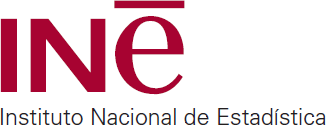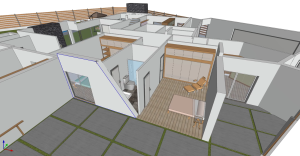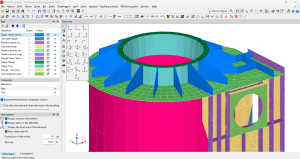In a rising market situation, price determination is complex due to the involvement of multiple factors that are difficult to quantify, which makes it necessary to study the causes that influence the change of market prices.
Among the variety of factors involved in the determination of market prices, it is worth
highlighting those that have the greatest impact:
- The recovery of investor confidence and the overcoming of uncertainty.
- The rising of commodity market prices:
- Commodity stock index futures: steel, copper, aluminium and lumber.
- CO2 emission allowances.
- The high indebtedness of states and the increase in the money supply, which threatens price stability.
- The rebound effect of the economy caused by the inactivity imposed by the pandemic, which generates:
- Anxiety over consumption and greater dynamism in the productive sector.
- Limited supply of some materials with limited production and a growing demand, such as lumber and steel.
- The general and continuous increase in energy prices: electricity and fuels.
- The shortage of skilled labour in the construction sector.
1. Recovering market confidence
The Investor Confidence Index, an indicator developed by the German agency Sentix, measures the mood and disposition of investors towards economic activity in the euro area.
In June this year (2021), this indicator reached a value of 28.1 points. whereas in December 2019 it stood at 0.7 points. This is a symptom of the recovery of market confidence, as reflected in the graph below:
On the other hand, the German agency Sentix warns that over-optimism about the reopening of the hotel industry and the recovery of trade, especially the tourism sector, may contribute to a rise in inflation in the short and medium term.
2. Rising prices of commodities and emission allowances
Commodity stock index futures: steel, copper, aluminium and lumber
The prices of raw materials or commodities, which are traded through the different analysis and investment platforms according to global supply and demand, are undoubtedly on the rise.
Costs in the construction sector are particularly affected by steel, copper, aluminium and lumber prices, which are subject to stock index futures prices, as illustrated in the graph below:
CO2 emission allowances
It should also be noted that emissions trading is a market-based instrument that provides an economic incentive or penalty for CO2 and other greenhouse gas emissions, and it is in essence a trading formula to comply with the 1997 Kyoto environmental protocols.
As can be seen in the following graph, the market value of emission allowances has increased by 82% from the beginning of December 2020 to June 2021. However, in the period corresponding to the peak of the pandemic there is a clear decline in the price, reaching its minimum value in April 2020.
3. Increase in money supply
As a result of states indebtedness to cover the negative impact that COVID-19 has had on the world economy, the world's major central banks, especially the US Federal Reserve (Fed) and the European Central Bank (ECB), have increased the money supply significantly, which means more money in circulation, often leading to higher inflation.
Therefore, we are facing an excess of money supply at a global level, which will lead to a generalised rise in prices.
4. Rebound effect of the economy
After a period of economic contraction the rebound effect is an inevitable factor. According to the European Statistical Office (Eurostat), since the last quarter of 2020, most Eurozone nations have significantly increased their GDP.
This rebound effect is a dynamising factor in the economy that directly or indirectly implies a rise in prices.
5. Energy price increase: electricity and fuels
The increase in the price of energy has a direct impact on the costs of construction throughout its life cycle, from the extraction of raw materials, the transport to the factory, the manufacturing process of the products, the transport and execution of the job, and of course, subsequently, the use and exploitation of the building.
The graph below illustrates the increase in electricity and WTI (West Texas Intermediate) crude oil prices over the last two years.
6. Shortage of skilled labour in the construction sector
This is a structural problem that the construction sector has been facing for more than a decade: the lack of skilled labour, especially foremen,construction managers and other skilled workers, results in a rise in real labour costs.
In addition to this shortage of skilled labour, there are other factors derived from the standstill of activity that has led to a rise in prices that has particularly affected the construction sector, among which the following should be highlighted:
The boom in renovations and extensions to existing dwellings to adapt them to the new needs discovered during the pandemic period.
The increase in household savings and financing capacity, as a result of consumption inhibited by COVID-19 restrictions.
7. Conclusion: construction prices and costs increase
From the study of the above economic indicators it can be concluded that:
- The recovery in investor confidence, together with the rebound effect of the economy and the increase in money supply, predicts a rise in inflation that translates into a generalised increase in prices.
- Rising raw material prices, especially for steel and lumber, together with rising electricity and fuel prices, results in an inevitable rise of construction costs.
In this context, the CYPE construction cost database Generador de precios, is constantly updated , based on product and/or material prices provided by manufacturers and/or suppliers. However, when there is a significant rise in prices caused by inflation, it is not feasible to immediately adjust prices to the market, even by the manufacturers themselves who have to bear the continuous increase in the costs of raw materials, workforce and/or energy.
In an inflationary situation, the Generador de Precios allows the prices to be adjusted to the construction market by means of adjustment parameters that depend on the volume of the job (built surface) and the current market conditions, which users can select in the initial "Cost breakdowns" screen according to the market situation:
- On the rise;
- Sustained growth;
- Moderate growth;
- Moderate recession;
- Sustained recession.
In the case of an inflationary situation, users must select the options “Moderate growth” or “On the rise” depending on the level of inflation.
Sources Consulted
Financial Market Statistics

Financial platform providing real-time data on 250 markets around the world via its 44 international editions.
Retrieved [16/06/2021].
https://es.investing.com/commodities/
https://es.investing.com/economic-calendar/sentix-investor-confidence-268
Spanish Statistics Institute INE (Instituto Nacional de Estadística

It is the coordinator of the official statistics carried out in Spain. Its main task is to compile public statistics, which are official studies on the situation and evolution of the population, economy and society in Spain.
Retrieved [16/06/2021].
https://www.ine.es/jaxiT3/Tabla.htm?t=23714
The Bank of Spain

It is the Spanish national central bank and, within the framework of the Single Supervisory Mechanism (SSM), the supervisor of the Spanish banking system together with the European Central Bank.
Retrieved [16/06/2021].
https://www.bde.es/bde/es/areas/estadis/
Statistics on Collective Bargaining Agreements

Provides statistical information on the most relevant aspects of collective bargaining agreements.
Retrieved [16/06/2021].






